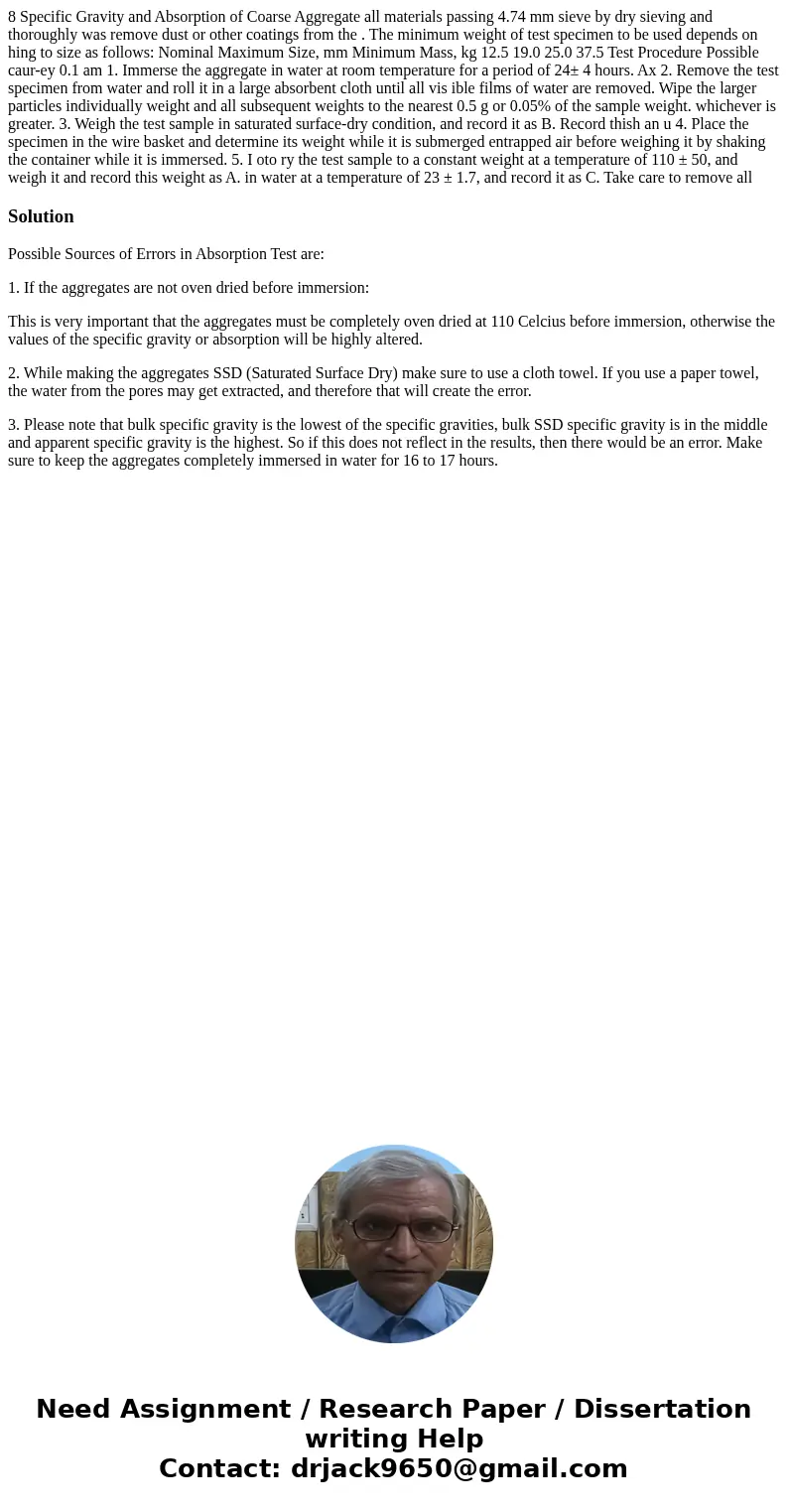8 Specific Gravity and Absorption of Coarse Aggregate all materials passing 4.74 mm sieve by dry sieving and thoroughly was remove dust or other coatings from the . The minimum weight of test specimen to be used depends on hing to size as follows: Nominal Maximum Size, mm Minimum Mass, kg 12.5 19.0 25.0 37.5 Test Procedure Possible caur-ey 0.1 am 1. Immerse the aggregate in water at room temperature for a period of 24± 4 hours. Ax 2. Remove the test specimen from water and roll it in a large absorbent cloth until all vis ible films of water are removed. Wipe the larger particles individually weight and all subsequent weights to the nearest 0.5 g or 0.05% of the sample weight. whichever is greater. 3. Weigh the test sample in saturated surface-dry condition, and record it as B. Record thish an u 4. Place the specimen in the wire basket and determine its weight while it is submerged entrapped air before weighing it by shaking the container while it is immersed. 5. I oto ry the test sample to a constant weight at a temperature of 110 ± 50, and weigh it and record this weight as A. in water at a temperature of 23 ± 1.7, and record it as C. Take care to remove all
Possible Sources of Errors in Absorption Test are:
1. If the aggregates are not oven dried before immersion:
This is very important that the aggregates must be completely oven dried at 110 Celcius before immersion, otherwise the values of the specific gravity or absorption will be highly altered.
2. While making the aggregates SSD (Saturated Surface Dry) make sure to use a cloth towel. If you use a paper towel, the water from the pores may get extracted, and therefore that will create the error.
3. Please note that bulk specific gravity is the lowest of the specific gravities, bulk SSD specific gravity is in the middle and apparent specific gravity is the highest. So if this does not reflect in the results, then there would be an error. Make sure to keep the aggregates completely immersed in water for 16 to 17 hours.

 Homework Sourse
Homework Sourse